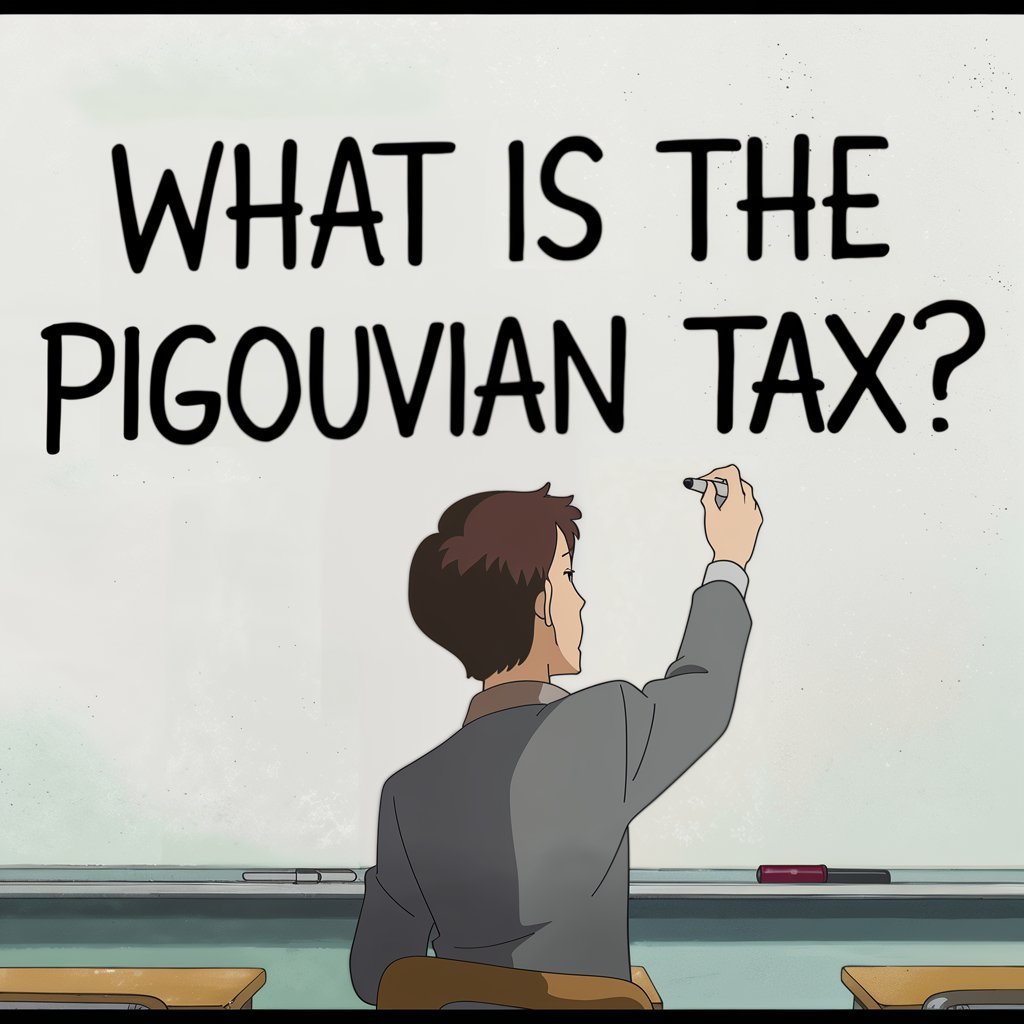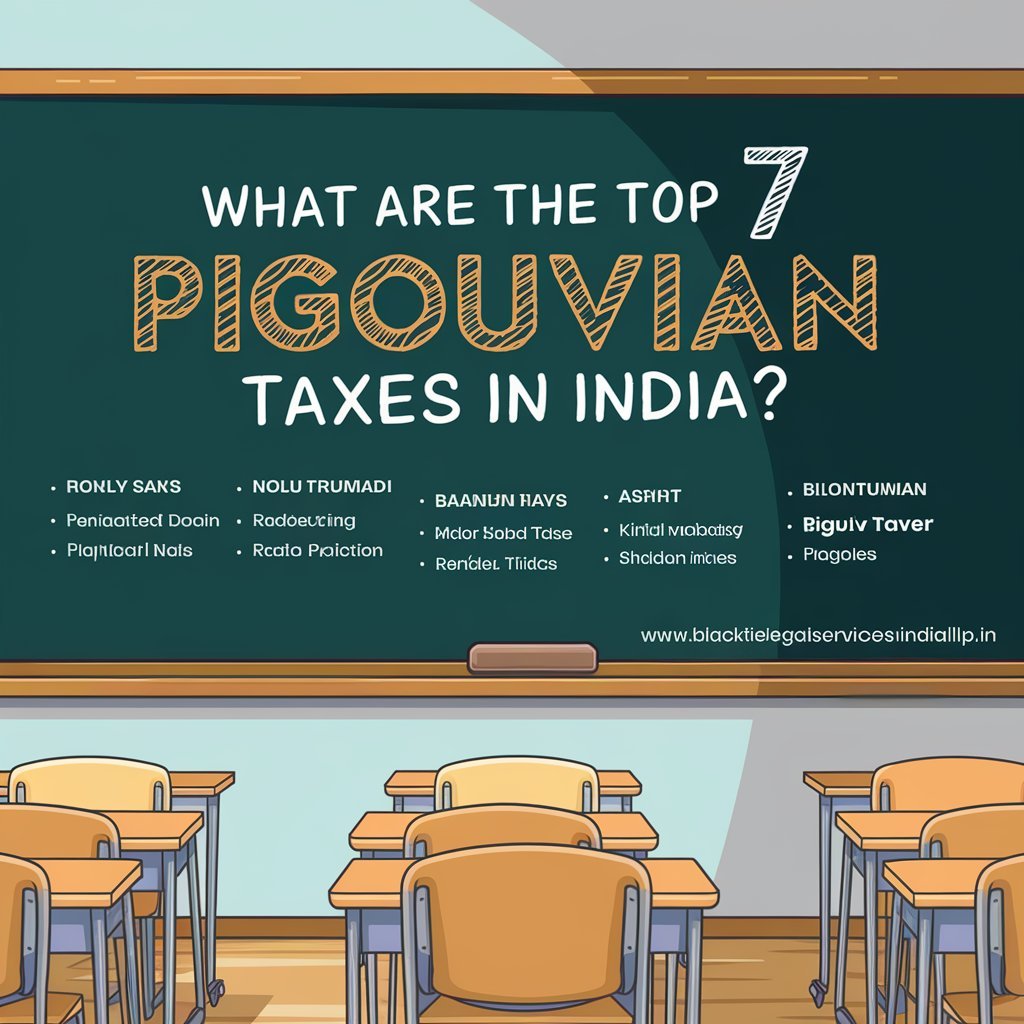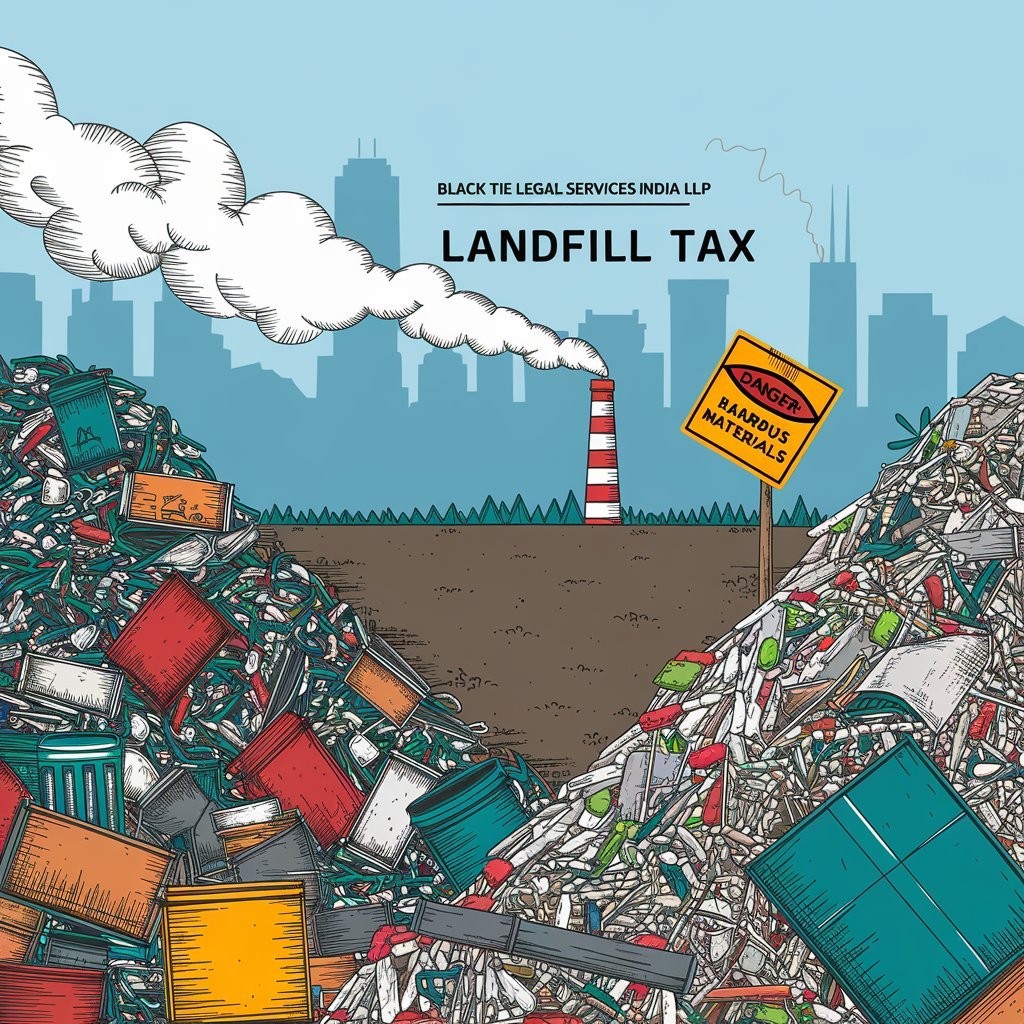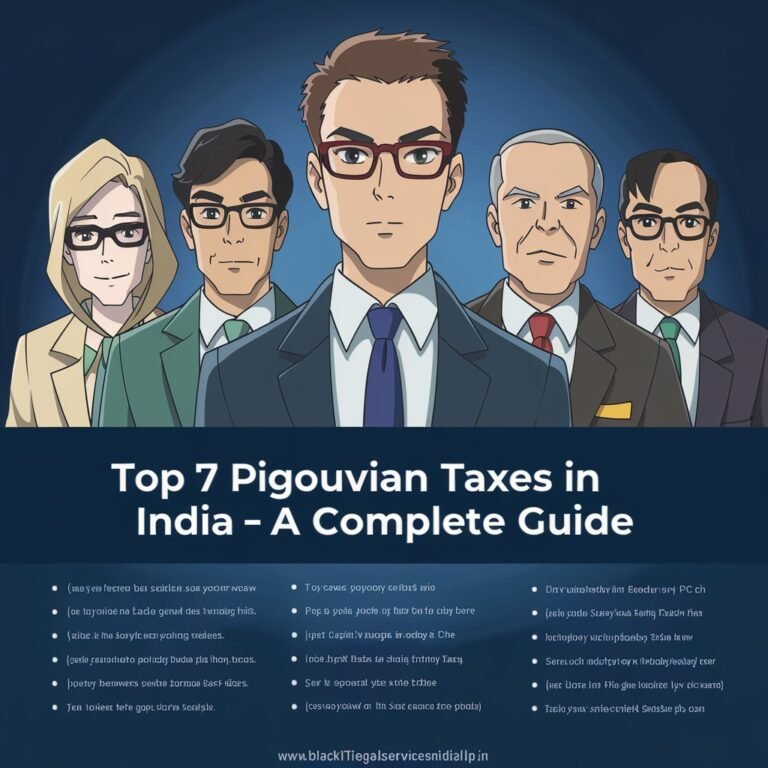In this blog, we will explore the top 7 Pigouvian taxes in India, evidencing their impact on society and the environment. In India, Pigouvian taxes are vital in addressing negative externalities by taxing activities that harm prevalent health, the environment or society. These taxes aim to reduce harmful behaviors and promote sustainability by making such activities more expensive. From pollution control to discouraging tobacco use, various areas are targeted under these taxes.
What is the Pigouvian Tax?
A Pigovian tax is a tax imposed on activities that generate negative externalities, which are costs to society that are not reflected in the business value of goods or services. The purpose of this tax is to correct market inefficiencies by incorporating the social cost of these externalities into the price of the activity or product.
1. Addresses negative externalities: This targets activities that harm others, such as pollution, noise, or health problems caused by certain products.
2. Encourages behavior change: By making harmful activities more costly, it encourages individuals and businesses to reduce their negative impact on society.
3. Optimal tax level: Ideally, the tax is set at a level equal to the marginal social cost of the externality, thereby aligning private costs with social costs.
4. Revenue generation: Governments can use the revenue collected from Pigouvian taxes to finance public goods or to compensate for losses caused by externalities.

What are the Top 7 Pigouvian Taxes in India?
1. Carbon Tax
2. Plastic Bag Tax
3. Congestion Charge
4. Landfill Tax
5. Fat Tax
6. Noise Tax
7. Taxes on “sin” items
To Pay All Types of Taxes Contact Our Expert Legal Adviser

1. Carbon Tax
A carbon tax is a type of Pigovian tax imposed on the carbon content of fossil fuels or the greenhouse gases emitted during their combustion. Its primary objectives are to reduce carbon emissions, tackle climate change and promote the use of clean and renewable energy sources.
1. Focus on the environment: It directly focuses on carbon emissions, which contribute significantly to global warming.
2. Market-based solutions: Increasing the cost of carbon-intensive activities, encourages businesses and individuals to adopt green practices.
3. Revenue generation: Tax revenues can be used to finance sustainable energy projects, climate adaptation programs, or offset the social costs of emissions.
2. Plastic Bag Tax
A plastic bag tax is a type of Pigovian tax that is imposed on the production, distribution, or use of plastic bags. Its main purpose is to reduce environmental damage caused by plastic pollution and promote the use of environmentally friendly alternatives.
1. Discouraging the use of plastic bags: Making plastic bags more expensive, encourages consumers and businesses to switch to reusable or biodegradable alternatives.
2. Revenue Generation: The money collected can be used for waste management, environmental protection, or public awareness campaigns.
3. Reduces environmental impact: Helps reduce plastic waste in landfills, rivers, and oceans, where it can harm wildlife and ecosystems.
3. Congestion Charge
Congestion fees are a form of Pigovian tax designed to reduce traffic congestion in urban areas. Drivers are charged a fee for driving in designated areas, particularly during peak hours, to discourage excessive use of private vehicles and encourage the use of public transport or carpooling.
1. Target areas: This applies to specific, high-traffic areas such as city centers or commercial centers.
2. Dynamic pricing: Charges may vary depending on the time of the day, and rates may be higher during peak hours to manage traffic flow.
3. Revenue allocation: Funds generated are often reinvested in public transportation, infrastructure development, or environmental initiatives.
4. Environmental Benefits: Reduced air pollution and carbon emissions due to reduced vehicle use.
4. Landfill Tax
Landfill tax is a type of Pigovian tax imposed on the disposal of waste in landfills. The primary goal of this tax is to reduce the amount of waste sent to landfills by incentivizing recycling, composting, and other waste management practices that are more environmentally sustainable.
1. Discouraging landfill use: By making landfill disposal more expensive, it prompts businesses and individuals to seek alternatives.
2. Promotes recycling: Encourages better waste segregation and recycling.
3. Environmental protection: Reduces environmental damage caused by landfill operations, such as methane emissions and groundwater pollution.

5. Fat Tax
A fat tax is a Pigovian tax designed to discourage unhealthy dietary habits by taxing foods and drinks high in fat, sugar, salt, or calories. It aims to reduce the consumption of unhealthy products, address obesity, and improve public health outcomes.
1. Targets unhealthy foods: This usually applies to junk food, sugary beverages, or foods high in saturated fat.
2. Encouraging healthy choices: By increasing the price of unhealthy products, it encourages people to choose healthier options.
3. Revenue for health initiatives: The money collected can be used for public health campaigns or to subsidize healthier food options.
6. Noise Tax
Noise tax is a form of Pigovian tax that aims to reduce noise pollution caused by activities or industries that create excessive sound levels, which have a negative impact on public health and the environment. Although there is no direct “noise tax” in India yet, some rules and penalties related to noise pollution operate similarly.
1. Noise Pollution Rules (2000): Permissible decibel limits for industrial, residential and silence zones.
2. Fines and penalties: Imposed for crossing the limit during events, religious ceremonies or construction.
3. Ban on firecrackers: Taxes and restrictions to prevent noise pollution during the festival.
7. Taxes on “sin” items
Sin taxes in India are levied on goods and services that are deemed harmful to public health or the environment, to discourage their consumption. Prominent examples include:
1. Tobacco and cigarettes: Higher GST (28%) and additional cess will be applicable to reduce smoking and related health problems.
2. Alcohol: Excise duty varies from state to state, aimed at curbing alcohol consumption and related health/social problems.
3. Sugary beverages: 28% GST on sugary beverages to reduce obesity, diabetes and other health risks.
4. Luxury items: Higher taxes on luxury items like expensive cars and jewelry to limit excessive consumption.
5. Plastic Products: Taxes or levies to reduce plastic waste and environmental pollution.
6. Gambling: Taxes on gambling activities (lotteries, casinos), to discourage addiction and social harm.
Conclusion:
Pigovian taxes are an effective tool for addressing negative externalities by internalizing the social costs associated with harmful activities. By taxing goods or behaviors that harm the economy, public health, or society, these taxes encourage individuals and businesses to reduce their harmful impact. In India, taxes on commodities such as tobacco, alcohol, sugary drinks and plastic waste serve as practical examples of Pigovian principles in action.
While they contribute to environmental sustainability and public health, the challenge lies in determining optimal tax rates and minimizing their regressive effects on lower-income groups. Ultimately, when designed and implemented correctly, Pigovian taxes can drive positive change, encourage responsible behavior, and generate valuable revenue for public welfare.
FAQs
Q1. Is Pigovian tax socially efficient?
Yes, a Pigovian tax is socially efficient when it reflects the true social cost of negative externalities. It encourages behavior change, leading to better resource allocation, public health, and environmental outcomes, provided the tax is set at the right level.
Q2. What happens when a Pigouvian tax is imposed?
Pigovian taxes increase the cost of harmful activities, thereby reducing their consumption or production. This helps align private and social costs, encourage sustainable practices, and generate revenue for public welfare.
Q3. What is the Pigouvian tax graph?
The Pigovian tax graph shows the market before and after a tax is imposed to correct negative externalities. It includes demand and supply curves, with the tax shifting the supply curve upward to reflect the social cost. This results in a higher price and lower quantity, which reduces the harmful activity.
Q4. How to find the Pigouvian tax?
To find a Pigovian tax, calculate the marginal social cost (MSC) of the external effect (e.g., pollution). The tax should be equal to the difference between the private cost and the social cost, addressing the harm caused per unit of activity to align private behavior with social welfare.
Q5. What is the Pigouvian tax rule?
The Pigovian tax rule states that taxes should be equal to the marginal social cost of the negative externality, encouraging individuals or businesses to reduce harmful behaviors by internalizing the cost to society.


Add a Comment